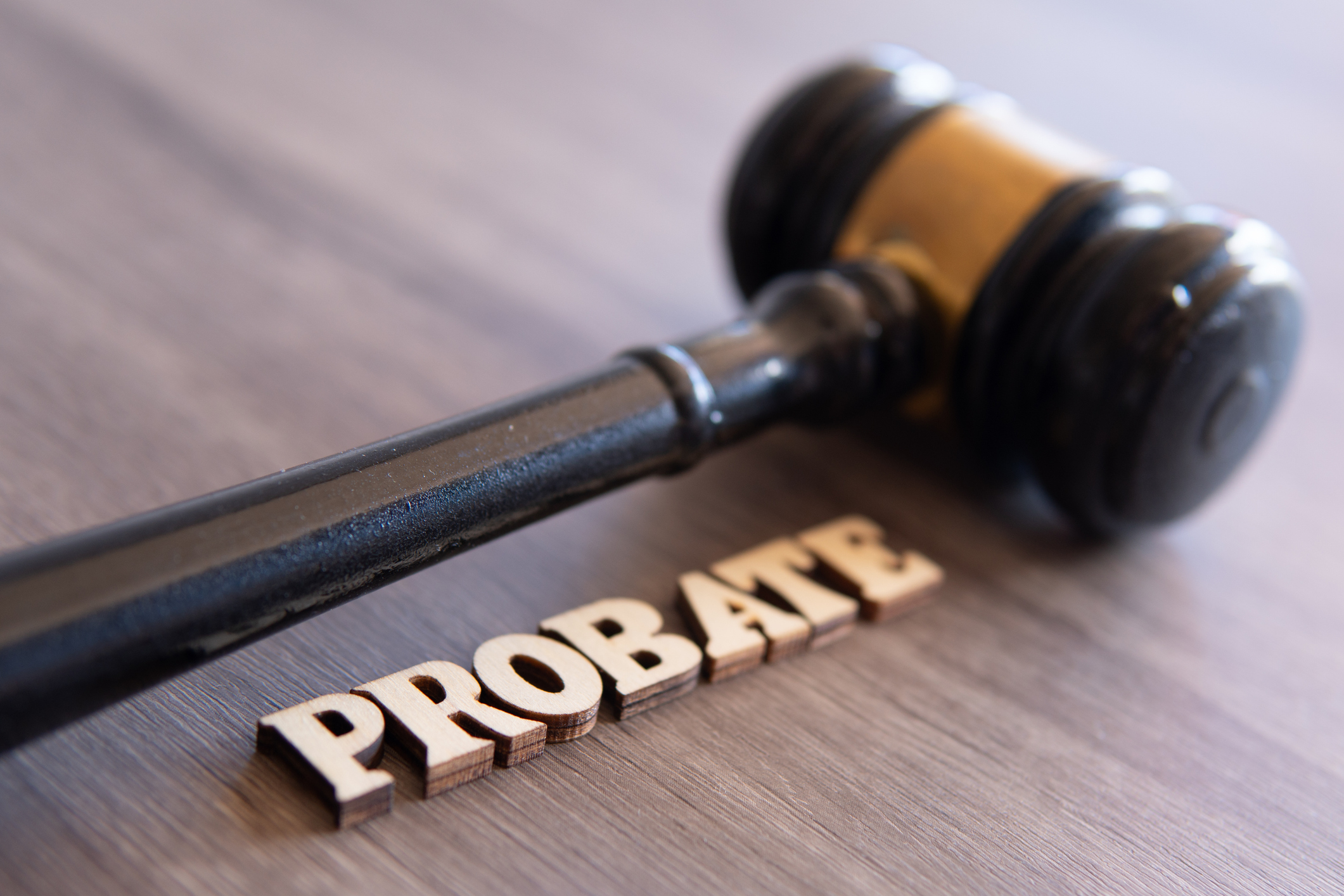10 Ways Retirees Can Manage Income Distribution
The goal of a retirement income plan is to make the most of your money while ensuring that it lasts. These 10 strategies can help secure your financial future.


Managing income distribution in retirement is essential to ensure your savings meet your current needs, last throughout your lifetime and minimize tax liabilities. With thoughtful planning, retirees can maximize their income and the longevity of their retirement.
Here are some actionable approaches to help you make the most of your nest egg.
1. Adopt a dynamic withdrawal strategy
The traditional 4% rule — a fixed annual withdrawal rate — may not suit everyone, particularly in volatile markets. A dynamic withdrawal strategy adjusts spending based on portfolio performance, allowing retirees to preserve wealth during market downturns and enjoy more leeway in spending during strong years.
From just $107.88 $24.99 for Kiplinger Personal Finance
Become a smarter, better informed investor. Subscribe from just $107.88 $24.99, plus get up to 4 Special Issues

Sign up for Kiplinger’s Free Newsletters
Profit and prosper with the best of expert advice on investing, taxes, retirement, personal finance and more - straight to your e-mail.
Profit and prosper with the best of expert advice - straight to your e-mail.
Consider the case of Emily. Her retirement begins with $500,000 in savings. In a year with strong market growth, she increases her withdrawal by 5%, taking out $21,000 instead of $20,000. Conversely, in a year of market losses, she scales back to $18,500 to protect her portfolio. Think of dynamic strategies like guardrails that help foster sustainability by linking spending to financial performance.
2. Sequence withdrawals to minimize taxes
The order in which you withdraw funds from your various retirement accounts — called withdrawal sequencing — is the cornerstone of tax-efficient income planning. This approach not only influences the taxes you pay throughout retirement but also affects how long your savings will last.
We recommend focusing on optimizing your current, potentially reduced tax rate by balancing withdrawals from taxable, tax-deferred and tax-free accounts. Taking advantage of today's lower tax brackets can help reduce your overall lifetime tax burden and preserve more wealth for your heirs. Here's a breakdown of the sequencing approach we advise for withdrawals in retirement:
- Withdraw from taxable accounts first. Start with taxable accounts. This reduces exposure to capital gains taxes and decreases your current tax liability while allowing tax-deferred accounts to continue compounding without triggering immediate tax consequences.
- Tax-deferred accounts next. Carefully plan withdrawals from tax-deferred accounts, such as traditional IRAs or 401(k)s, to take advantage of your current tax rate. Doing so earlier — before required minimum distributions (RMDs) begin at age 73 —can prevent larger tax bills later and minimize the impact of deferring funds to potentially higher future tax brackets.
- Tax-free accounts last. Save Roth IRA withdrawals for last to maximize their tax-free growth. These funds can act as a safety net for unexpected expenses or be used strategically to offset taxable income, preventing higher tax rates or Medicare premium surcharges.
3. Take advantage of Roth conversions
Converting funds from a traditional IRA to a Roth IRA can be a smart move, allowing you to pay taxes on the converted amount now in exchange for tax-free withdrawals in the future. It’s the difference between paying taxes on the seed of your income or the harvest of it. Remember, taxes are (more than likely) going to increase as time goes on. This approach is particularly advantageous during low-income years, when the tax rates on the conversion may be lower than in future years, especially if you expect to be in a higher tax bracket later.
For example, Michael, in a low tax bracket, converts $50,000 from his traditional IRA to a Roth IRA, paying taxes at his current rate. This reduces his future required minimum distributions and provides him with tax-free income later. By taking advantage of favorable tax conditions now, Roth conversions can help retirees reduce future tax liabilities and enhance financial flexibility.
4. Leverage qualified charitable distributions (QCDs)
Qualified charitable distributions (QCDs) are a powerful strategy for retirees who are 70½ or older, offering a way to make tax-free gifts to charities directly from an IRA while satisfying required minimum distributions. Unlike standard withdrawals, QCDs are excluded from taxable income, making them an excellent option for those looking to support causes they care about while minimizing their tax burden.
A QCD allows IRA owners to transfer up to $105,000 annually directly to a qualified charity. This transfer counts toward the RMD for the year but does not increase taxable income. By reducing adjusted gross income (AGI), QCDs can also help lower the impact of other taxes, such as those on Social Security benefits or Medicare premiums.
5. Refine the bucket strategy for practical use
The bucket strategy offers retirees a simple yet effective framework for managing their assets by dividing them into segments based on when the funds will be needed. By aligning investments with specific time horizons, this approach balances immediate liquidity needs with long-term growth potential, providing both stability during retirement. Here’s how to make it work for you:
- Assess time horizons. Identify short-term (one to three years), medium-term (four to 10 years) and long-term (10+ years) financial needs.
- Allocate funds. Divide assets into buckets: cash/short-term bonds for Bucket 1, balanced investments for Bucket 2 and equities for Bucket 3.
- Monitor and adjust. Review and rebalance buckets annually, transferring gains during strong markets and adjusting for changing needs.
- Withdraw strategically. Use Bucket 1 for monthly income, replenish it from Bucket 2 as needed, and let Bucket 3 grow for the long term.
6. Delay Social Security benefits
Delaying Social Security benefits past your full retirement age increases monthly payments by 8% annually until age 70. This is a reliable way to boost guaranteed income.
Let’s take a look at an example. Say a retiree named Tom claims Social Security at 70, receiving $3,100 monthly instead of $2,400 at 66. Over the next 20 years, this decision adds nearly $170,000 in benefits, excluding cost-of-living adjustments. For retirees with other income sources, delaying Social Security can enhance lifetime payouts.
7. Manage RMDs proactively
Required minimum distributions (RMDs) begin at age 73 for most retirees and can significantly impact taxes, potentially pushing you into a higher tax bracket. Strategic planning before RMDs are required can help reduce this tax burden and keep more of your savings intact. Here’s what we suggest:
- Withdraw early. Begin IRA/401(k) withdrawals in your 60s to spread taxable income over more years and avoid large RMDs later. Withdraw just enough to stay in your current tax bracket.
- Roth conversions. Convert small amounts to a Roth IRA during low-income years to reduce future RMDs. Spread conversions over several years to avoid high taxes on large conversions.
- Use QCDs. Donate up to $105,000 annually from your IRA after age 70½ to satisfy RMDs tax-free. Direct QCDs to charities you already support to reduce taxable income.
- Diversify accounts. Maintain Roth, traditional and taxable accounts to manage withdrawals flexibly. Build Roth and taxable savings early for more options in retirement.
- Consider annuities. Use an annuity to defer RMDs on up to $200,000 until age 85 through a qualified longevity annuity contract, or QLAC. Only choose annuities if you value guaranteed income and can part with funds for the long term. We’ll discuss this point more in the next section.
8. Explore annuities for guaranteed income
Annuities offer predictable income, making them a valuable tool for retirees seeking stability. Immediate annuities start payments right away, while deferred annuities begin at a future date, often at higher payout rates. These can supplement Social Security, covering essential expenses or filling gaps in income. Here’s how you can make the most of annuities in your retirement income and distribution strategy:
- Match income to expenses. Use annuities to cover essential expenses, such as housing or health care, ensuring stable cash flow for critical needs.
- Keep funds flexible. Avoid over-investing in annuities. Maintain a portion of your savings in accessible accounts for emergencies or growth opportunities.
- Shop smart. Compare fees, payout rates and terms from multiple providers to get the best value.
- Defer strategically. Consider deferred annuities or qualified longevity annuity contracts (QLACs) to secure higher payouts and delay RMDs on up to $200,000.
By carefully integrating annuities into your retirement plan, you can create a reliable income stream while preserving the flexibility to adapt to future needs, striking a balance between financial security and long-term growth potential.
9. Proactively manage health care expenses
Health care costs, including premiums, deductibles and long-term care, are among the most significant expenses retirees face. Planning ahead can help mitigate these expenses and preserve your retirement savings for other needs.
- Health savings accounts (HSAs). If you’re enrolled in a high-deductible health plan, maximize contributions to your HSA during your working years. These funds grow tax-free, and withdrawals for qualified medical expenses in retirement are also tax-free. Use HSA funds for Medicare premiums, dental care or other eligible costs to reduce the strain on your budget.
- Long-term care insurance. Consider purchasing a long-term care insurance policy in your 50s or early 60s. This helps cover costs for nursing homes, assisted living or in-home care, which are not typically covered by Medicare. Look for hybrid policies that combine long-term care coverage with life insurance for added flexibility.
- Budget for out-of-pocket costs. Set aside a portion of your retirement savings to cover out-of-pocket medical expenses, which can average hundreds of thousands of dollars over a lifetime.
10. Stay flexible and reassess annually
Circumstances change, and so do your financial needs and tax regulations, making an annual review of your retirement strategy essential. Checking in on your income, expenses and any new developments in tax laws ensures your plan adapts to life’s changes and keeps you on track. Use these practical steps to stay on track annually.
- Set a review date. Schedule a specific time each year, such as January, to evaluate your plan.
- Compare income and expenses. Check whether your withdrawals align with your spending and adjust if needed.
- Monitor tax changes. Stay informed about tax law updates that may affect your distributions.
- Consult tools or experts. Use online retirement calculators or consult tax resources to refine your approach.
The bottom line
Effective income distribution in retirement isn’t just about the numbers, but rather aligning financial decisions with your lifestyle goals. By combining dynamic withdrawals, tax-efficient strategies and thoughtful planning, retirees can ensure their savings last, providing financial confidence and security for years to come.
Related Content
- 10 Ways to Generate Retirement Income
- Roth Conversions: Convert Everything at Once or as You Go?
- The (R)evolution of Retirement Income Planning
- The Wealth-Building Powers of Health Savings Accounts (HSAs)
- Confused by Annuities? Making Sense of the Different Types
Profit and prosper with the best of Kiplinger's advice on investing, taxes, retirement, personal finance and much more. Delivered daily. Enter your email in the box and click Sign Me Up.

John L. Smallwood, CFP®, is the President and Senior Wealth Advisor of Smallwood Wealth Management, with over 30 years of experience in the financial industry. He is a recognized thought leader and entrepreneur dedicated to helping clients achieve financial confidence through the Wealth Curve Blueprint™, a holistic approach to investment consulting and financial planning. John focuses on mitigating financial risk, reducing tax liabilities and fostering long-term wealth growth and legacy planning.
-
 4 Great Tools to DIY Your Own Financial Plan
4 Great Tools to DIY Your Own Financial PlanSmart Savings Several tools picked out by Kiplinger that DIYers can use to make their own financial plan.
-
 The 7-Month Deadline That Sets Your Lifetime Medicare Premiums
The 7-Month Deadline That Sets Your Lifetime Medicare PremiumsUnderstanding Medicare enrollment is crucial, as missing deadlines can lead to permanent late enrollment penalties and gaps in coverage.
-
 Retirees Living in Portugal: You Need a Post-NHR Tax Strategy
Retirees Living in Portugal: You Need a Post-NHR Tax StrategyWhen your 10-year Non-Habitual Resident tax break ends, you could see your tax rate soar. Take steps to plan for this change well before the NHR window closes.
-
 The 7-Month Deadline That Determines Your Lifetime Medicare Premiums
The 7-Month Deadline That Determines Your Lifetime Medicare PremiumsUnderstanding Medicare enrollment is crucial, as missing deadlines can lead to permanent late enrollment penalties and gaps in coverage.
-
 If You're a U.S. Retiree Living in Portugal, Your Tax Plan Needs a Post-NHR Strategy ASAP
If You're a U.S. Retiree Living in Portugal, Your Tax Plan Needs a Post-NHR Strategy ASAPWhen your 10-year Non-Habitual Resident tax break ends, you could see your tax rate soar. Take steps to plan for this change well before the NHR window closes.
-
 Could Target-Date Funds With Built-In Income Guarantees Be the Next Evolution in Retirement Planning?
Could Target-Date Funds With Built-In Income Guarantees Be the Next Evolution in Retirement Planning?With target-date funds falling short on income certainty, retirement plans should integrate guaranteed income solutions. Here is what participants can do.
-
 Stocks Chop as the Unemployment Rate Jumps: Stock Market Today
Stocks Chop as the Unemployment Rate Jumps: Stock Market TodayNovember job growth was stronger than expected, but sharp losses in October and a rising unemployment rate are worrying market participants.
-
 7 Ways to Plan Now to Save on Medicare IRMAA Surcharges Later
7 Ways to Plan Now to Save on Medicare IRMAA Surcharges LaterUnderstand the critical two-year lookback period and why aggressive planning before you enroll in Medicare is the most effective way to minimize IRMAA.
-
 The Delayed November Jobs Report Is Out. Here's What It Means for the Fed and Rate Cuts
The Delayed November Jobs Report Is Out. Here's What It Means for the Fed and Rate CutsThe November jobs report came in higher than expected, although it still shows plenty of signs of weakness in the labor market.
-
 The 'Best of Both Worlds' Rule of Retirement Spending
The 'Best of Both Worlds' Rule of Retirement SpendingIt's the 4% rule on steroids. Here's what it is and why it may work for you.
-
 Don't Let the Court Decide: Test Your Knowledge on Avoiding Probate
Don't Let the Court Decide: Test Your Knowledge on Avoiding ProbateQuiz Test your basic understanding of why having a estate plan is crucial to avoiding probate in our quick quiz.